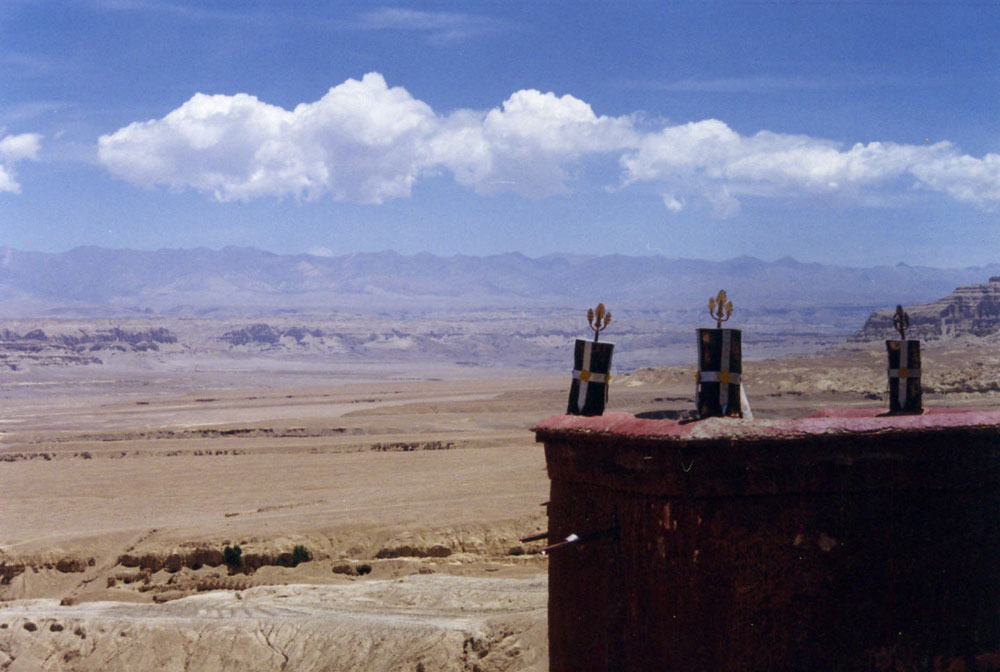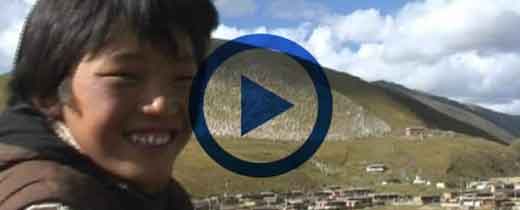
Ngari also spelled as “Ali”.
Ngari Three Lands is also called “Ali Three Division”, which means ” Ngari, a piece of land divided into three”
When Jigde Nyima Gon used Burang as a base to develop business, trade, and economy, he finally established his regime which was the predecessor of the Guge Kingdom, and because its capital was determined to be in the Guge, it is also called the Guge Kingdom
Note: The area of the Guge Kingdom at this time is much larger than that of the later Guge Kingdom
Overview
In the late years of Jigde Nyima Gon, the Guge Kingdom controled Burang in the east, Guge (Zanda) in the west, Rutok in the north, and Maryul (Ladakh) and Zanskar in the northwest.
Jigde Nyima Gon had three sons, it probably because of to prevent his sons from repeating their Parents’ mistake of fighting for power which might lead to the collapse of the dynasty. He divided the land of the Kingdom into three parts and gave them to his three sons in his later years,
—The eldest son, Ribha Gon took today’s Leh (now India-controlled Kashmir) as its capital, and governed Maryul (in the present-day Ladakh area), which later developed into Kingdom of Ladakh
—The second son Tashi Gon ruled the land of Burang, Guge, Rutok,and Yazi (Mustang in Nepal today)
—The third son, Dezu Gon, ruled the places west of Guge, south of Ladakh, the territory of Zanskar (also known as “Sangar”)
Note: At that time, the jurisdiction of Zanskar overlapped with some areas of Kinnaur, Lahore and Spiti in the northeastern part of Himachal Pradesh, India.
Because the names of the three sons of Jigde Nyima Gon all have the word “Gon”. Therefore, historians of later generations called Jigde Nyima Gon’s act of entrusting the three lands to his three sons as “Three Gon occupying three lands“
Based on this, the descendants of Jigde Nyima Gon gradually formed three royal lines in the Ngari region: the line of Ladakh King, the line of Burang King and the line of Guge King
From then on, the Zhang Zhung area under Tubo’s jurisdiction was gradually changed to “Ngari-skorsum“, meaning Ngari (Ali) Three Lands. This makes the term “Ngari (Ali) ” to be officially used and till this day. It means “the territory of the descendants of Tubo Dynasty”.
Today’s “Ngari Three Lands” regional concept evolved from here.
One regional concept
Here, one concept is needed to be clarified, that is, the scope of Ngari’s measurements
In different periods, with the strength of the Tubo dynasty and subsequent kingdoms, the scope covered by “Ngari Three Lands” was different, which can basically be divided into three periods: large, medium and small.
During Tubo dynasty
Because the Tubo dynasty continued to maintain its strength in the Western Regions, the scope of “Ngari Three Lands” was as far as Central Asia, which was truly large
According to “mdo-smad-chos-vbyung-deb-ther-rgya-mtsho-zhes-bya-ba” and “legs bshad rin po che’i gter mdzod” that “Ngari Three Lands” was:
—Burang, Maryul (Ladakh region with Leh as the center), and Zanskar (Southwest Ladakh) were the first land
—Liyul (also known as Khotan, present-day Hotan in Xinjiang), Baltistan (also known as “The greater Patola Sahi”, north of Ladakh), and Zhu Xia (the Gilgit of Pakistan-controlled Kashmir) were the second land
—Zhangzhung (present-day Zanda County, the area centered on Zaparang), Upper Tri-tai (present-day Gar County, Rutok County, and Gegyai County around Mountain Kailash), Lower Tri-tai (Lake Manasarovar, Zhongba county) was the third land
After the fall of Tubo dynasty
The scope of Ngari Three Lands began to shrink. By the time Jigde Nyima Gon divided the lands for his three sons, Ngari Three Lands basically only covered the three places of Burang, Guge, and Maryul including Zanskar. Baltistan, Gilgit, and Khotan had all been separated out
According to “lDevu chos vbyung rgyas pa” that Ngari Three Lands included
—Burang, being surrounded by snow mountains
—Guge (Zanda), being surrounded by rocks
—Maryul (include Zanskar), being surrounded by lakes
From 1679 to 1682 AD
During the time of the Fifth Dalai Lama Luosang Gyatso, the only areas that could be controlled by Ngari Three Lands were the three “Zong” of Rutok, Burang, and Guge.
According to “Records of Rdo-rings-bstan-vdzin-dpal-vbgor” that Ngari Three Lands included
—Burang, being surrounded by forests
—Guge (Zanda), being surrounded by rocks
—Rutok, being surrounded by snow mountains
Concluding remarks
In addition to the aforementioned records in historical materials, there are still many opinions among the people about the scope of Ngari’s measurements.
And there have been many disputes over the territory of Tibet in history, especially the territory of the Guge Kingdom in the far west of Ngari.
Due to the lack of historical data, various opinions on various materials have been divergent, and various ancient place names have not been rigorously verified, moreover the spell of toponym can be different. So that in different materials, the same place name refers to a place could even be hundreds of miles away, Therefore, It is almost inevitable that disputes arise




